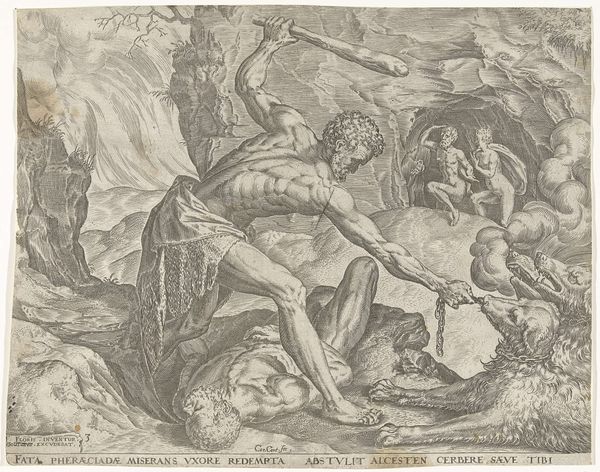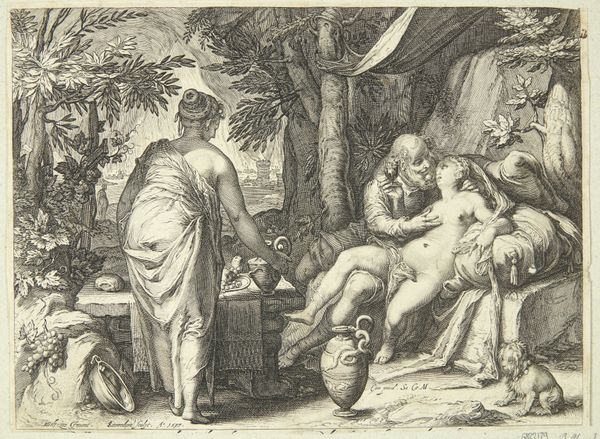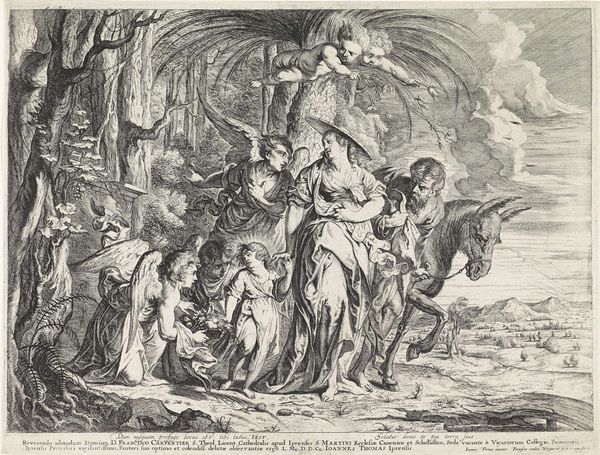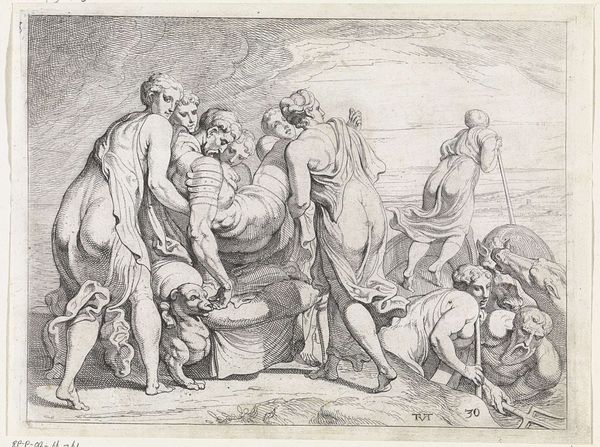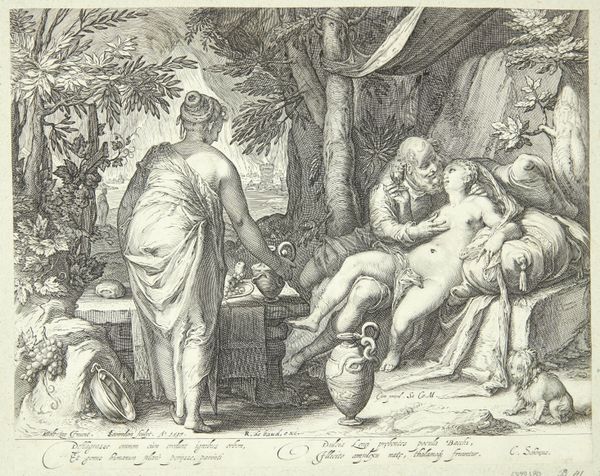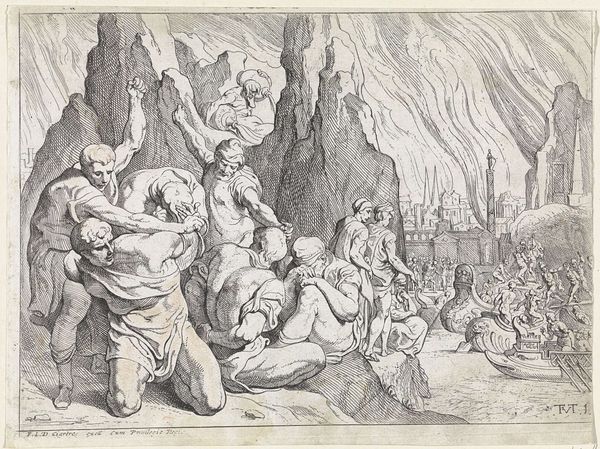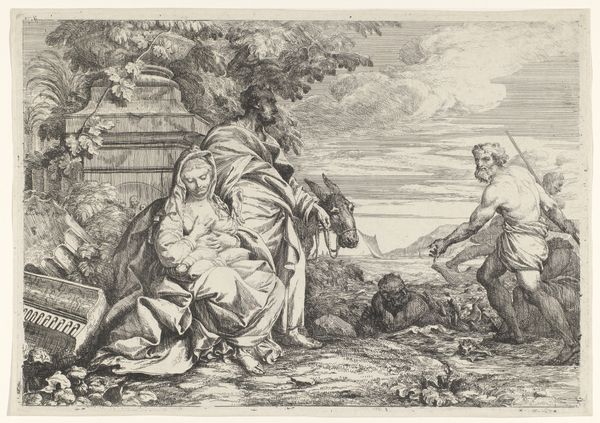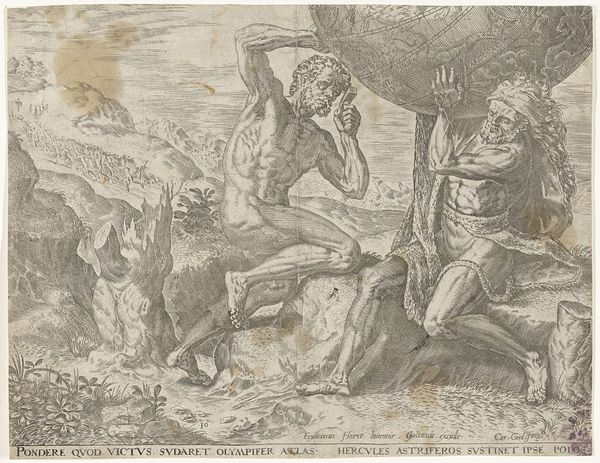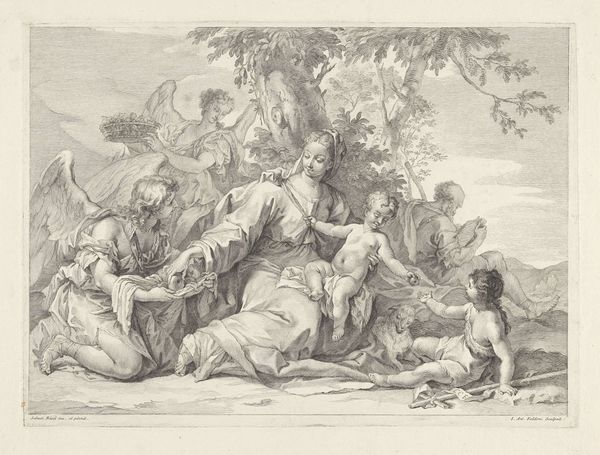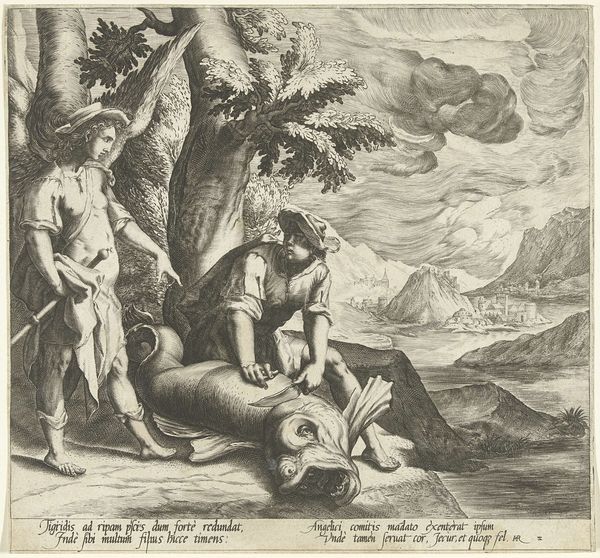
print, engraving
#
allegory
#
narrative-art
#
baroque
# print
#
landscape
#
figuration
#
genre-painting
#
engraving
Dimensions: height 199 mm, width 257 mm
Copyright: Rijks Museum: Open Domain
Curator: The piece we're examining today is a Baroque engraving by Theodoor van Thulden, dating back to 1632 or 1633. It's titled "Polyphemus bewaakt de kudde" – Polyphemus guarding the flock. Editor: The texture created by the engraving is remarkable, almost fabric-like. There is something monumental and yet surprisingly intimate in its execution, don't you think? Curator: Absolutely. It is a superb demonstration of van Thulden’s technique. Look closely and you'll notice the lines aren’t just outlines. They build volume, texture, creating the effect of light falling across surfaces. Van Thulden was part of Rubens' circle, and he understood the impact material and form had on expressing meaning. Editor: Speaking of meaning, the myth of Polyphemus is anything but straightforward. Here, we see him as this almost melancholic figure, guarding his flock as the drama unfolds in the background, in this case, Odysseus escaping from his cave. I'm immediately drawn to the complexities of power dynamics here—the vulnerability inherent in this one-eyed giant, juxtaposed with his monstrous reputation. Curator: It's fascinating how he presents it. Engraving, unlike painting, is a subtractive process. The artist is physically removing material from the plate, it suggests, in its own way, destruction but for creation, and in that creation using these meticulous marks, it reflects something about labor, production, and consumption in the Dutch Golden Age. This print would have been part of a larger system of image production and distribution. Editor: Yes! And seeing Odysseus's escape highlights narratives of resistance against tyrannical power—a recurring theme throughout art history, especially potent during periods of social and political upheaval. The use of allegory here lets the artist speak on a societal level using mythology, offering a commentary on authority and freedom. Curator: These prints were not precious, unique objects then but readily available reproductions. The making, dissemination and reception tell us much about societal structure and taste. And they are stunning works of material process and craft. Editor: Absolutely, and while appreciating the technical aspects, we can’t ignore the narratives being subtly critiqued. Considering our own contexts now and interrogating stories of dominance is, to me, crucial in understanding our present through this art of the past. Curator: Indeed, a reminder that the beauty and the beast always contain layers waiting to be uncovered. Editor: Agreed. A complex, yet captivating print.
Comments
No comments
Be the first to comment and join the conversation on the ultimate creative platform.

